#DUBLIN COASTAL
Text


Aurora Borealis as seen from North Dublin, Ireland (2) by Vaidas Balsys
Via Flickr:
(1) 24th September 2023.
(2) 5 November, 2023. Timelapse also available from combined 277 shots: youtu.be/CKv6WHqZ5WE
36 notes
·
View notes
Text
ST ANN'S WELL AT ST ANNE'S PARK
The well itself dried up in the 1950s, and although Dublin City Council made several attempts to relocate the source, it remains dry as of 2021.
A HOLY WELL NOW DESCRIBED AS A WISHING WELL
This was difficult to photograph as there was little natural light available.
The notices within the grounds and the tour guide, aimed at children, refer to the well as a wishing well but I am not convinced that it was ever a wishing well and as I have never seen any coins within the structure I suspect the most visitors are not convinced either.
St.…
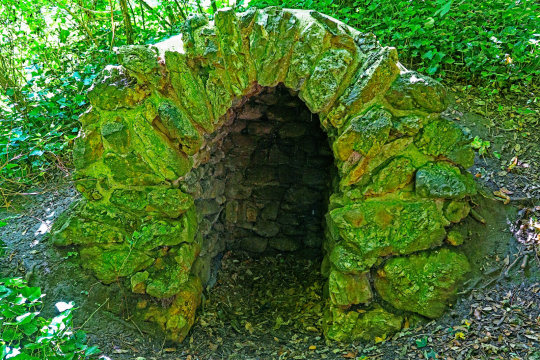
View On WordPress
#church of ireland#city&039;s second largest municipal park#Dublin City council#formal joint procession of worshippers#Guinness family#holy well#main coastal entrance#popular holy well#Raheny#religion#Roman Catholic church#St Anne&039;s Well#William Murphy#Wishing Well
1 note
·
View note
Text

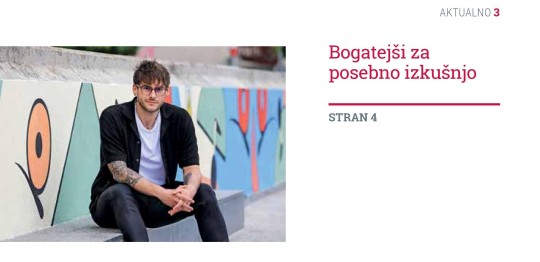
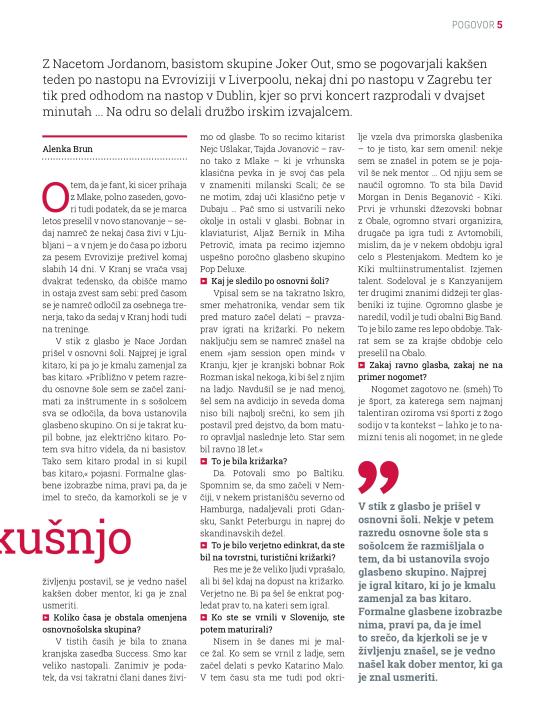

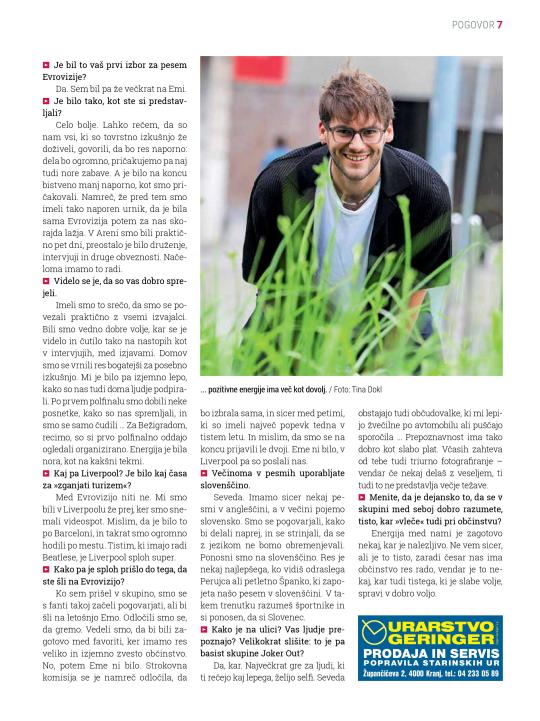
Interview with Joker Out's member Nace Jordan, from Slovenian magazine Kranjčanka!
"Enriched by a special experience"
We caught up with Nace Jordan, bassist of Joker Out, a week or so after the Eurovision show in Liverpool, a few days after the show in Zagreb, and just before they left for the show in Dublin, where they sold out their first show in twenty minutes… On stage, they kept company to the Irish performers.
The fact that this guy, who is otherwise from Mlaka (T.N: small village near Kranj), is fully booked, can be confirmed by telling you that he moved into a new flat in March of this year - he has been living in Ljubljana for some time now - but he has spent less than 14 days there until it was time for the Eurovision Song Contest. He still returns to Kranj at least twice a week to visit his mother and to stay true to himself: he decided to get a personal trainer a while ago, so now he also goes to Kranj to train there.
Nace Jordan came into contact with music in primary school. He first played the guitar, which he soon replaced with the bass guitar. "Around the fifth grade of primary school (T.N: 10-11 years old), I became interested in instruments and a classmate and I decided to start a music group. He bought a drum set and I bought an electric guitar. Then we quickly saw that there were no bass players. So I sold the guitar and bought a bass guitar," he explains. He has no formal musical training, but says he has been lucky that wherever he has gone in life, there has always been a good mentor who has been able to guide him.
I: How long did this primary school group last?
N: In those days it was a well-known Kranj band called Success. We did a lot of gigs. It's interesting that all the band members from that time are now living off music. They are, for example, the guitarist Nejc Ušlakar, Tajda Jovanović - also from Mlaka - who is a top classical singer and used to sing at the famous Scala in Milan; if I am not mistaken, she is now teaching classical singing in Dubai. We just created an environment for ourselves and stayed in music. The drummer and keyboard player, Aljaž Bernik and Miha Petrovič, have, for example, a very successful wedding band, called Pop Deluxe.
I: What came after primary school? (* (T.N: In Slovenia, primary school lasts for 9 years, from ages 6-15)
N: I enrolled at the then Iskra University, majoring in mechatronics, but just before graduation I started working - actually playing on a cruiser. By some chance I found myself at a jam session open mind in Kranj, where the Kranj drummer Rok Rozman was looking for someone to go on the boat with him. He was impressed with me, I auditioned and of course they weren't very happy at home when I confronted them with the fact that I was going to take my final exams the following year. I was just 18 years old.
I: Was that a cruise ship?
N: Yes. We were travelling in the Baltic Ocean. I remember that we started in Germany, in a port north of Hamburg, then continued on to Gdansk, St Petersburg and to the Scandinavian countries.
l: That was probably the only time you've been on a cruise ship of that kind, a tourist cruise ship?
I've had a lot of people ask me if I would ever go on holiday on a cruise ship. Probably not. But I would go and have another look at the one I played on.
I: When you came back to Slovenia, did you graduate from high school?
N: I didn't and I still regret it a little bit. When I came back from the ship, I started working with the singer Katarina Malo. During that time, I was also taken under the wing of two musicians from Primorska (T.N.: a region in the South-Western part of Slovenia) - that's what I mentioned: I found myself somewhere and then a mentor came along. I learned a lot from them. They were David Morgan and Denis Beganovic - Kiki. The first one is a top jazz drummer from the coastal area, he organises a lot of stuff, and he also plays with Avtomobili (T.N. slovenian band), I think he even played with Plestenjak (T.N. Jan Plestenjak, a famous Slovenian pop singer) at one point. Whereas Kiki is a multi-instrumentalist. He's an extraordinary talent. He has worked with Kanzyani and other famous DJs and musicians from abroad. He has made a lot of music, and he also led the Big Band from the coastal region. That was a really nice period for me. I even moved to the coastal region for a short period.
I: Why music, why not football?
N: Certainly not football (laughs). It's the sport I'm least talented in, or rather, all ball sports fall into that context - be it table tennis or football; and, even though my surname is Jordan, I'm the worst basketball player in the world (laughs). Just two days ago, I met my first grade teacher, and of course the topic of music and Eurovision came up. She told me that she knew even back then that school was not for me, but that I would definitely do something creative in my life. It brought back memories of how bored I was at school and how I would rather draw under my desk than listen, even though I was not a bad student.
I: You haven't been a member of Joker Out for long.
N: Since last year. Martin Jurkovič, the original bass player, felt at some point that music was not his main path. He is also an extremely talented programmer and is studying in that direction. He wants to study abroad and decided to finish that chapter. I knew the lead singer of the band, Bojan, from some mutual friend groups before, and the guys were looking for someone who was around their age, professional, good at what they do, and they thought of me. And Martin was in favour of me coming into the group instead of him.
I: And did you imagine that the band would continue the way it did?
N: From the beginning I went into the band with a bit of hesitation. I even suggested a test period. I had learnt that there has to be chemistry between the members. And if we didn't get along with each other the way we do, we wouldn't have performed on the Eurovision stage. We would have had a fight otherwise.
I: Do you spend a lot of time together?
N: First there were the Eurovision showcase concerts, and now there is the summer concert tour in Slovenia. We also have quite a few problems, because we get a lot of calls from abroad. It's logistically difficult, so we're looking for a solution to link some of the concerts to the tour. After the Eurovision Song Contest, we really started to get noticed abroad.
I: Was this your first Eurovision Song Contest?
N: Yes. But I have been to EMA (slovenian national selection for ESC) several times before.
I: Was it as you imagined it would be?
N: Even better. I can say that everyone who has been through this kind of experience has told us that it will be really tough: there will be a lot of work, but that we should also expect crazy parties. But in the end, it was much less exhausting than we expected. In fact, we had such a busy schedule beforehand that Eurovision itself was almost easier for us afterwards. We were practically in the Arena for five days, the rest was socialising, interviews and other commitments. In principle, we like that.
I: You seemed to be well received.
N: We were lucky enough to have connected with practically all the performers. We were always in a good mood, which was seen and felt both in the performances and in the interviews, during the statements. We came home really enriched by a special experience. And it was really nice to see how the people at home supported us. After the first semi-final, we got some footage of how they were watching us and we were just amazed how behind Bežigrad (Ljubljana district), let's say, they watched the first semi-final show in an organised way. The energy was crazy, like at a match.
I: What about Liverpool? Was there any time to "play tourists"?
N: During Eurovision, not really. We were in Liverpool before, because we were shooting a video. I think it was after Barcelona, and we did a lot of walking around the city then. For those who like the Beatles, Liverpool is great.
I : How did it come about that you went to Eurovision in the first place?
N : When I came into the group, the guys and I immediately started talking about whether we would go to this year's EMAs. We decided to go. We knew we would definitely be one of the favourites because we have a really big and extremely loyal audience. Well, then the EMA didn't happen. The jury decided to make their own choice, from the five entries who had the most songs of the week during that year. And I think only two of us ended up applying. There was no EMA, and they sent us to Liverpool.
I: You mostly use Slovenian in your songs.
N: Of course. We have a few songs in English, but we mostly sing in Slovenian. We were talking about how we would work going forwards, and we agreed not to bother with the language. We are proud of our Slovenian language. It's really something beautiful when you see an adult Peruvian man or a five-year-old Spanish girl singing our song in Slovenian. In that moment you understand the athletes and you are proud to be Slovenian.
I: How is it on the street? Do people recognise you? You often hear: is that the bass player of Joker Out?
N: Yes, quite. Most of the time it's people who say something nice to you, or want a selfie. Of course, there are also some "admirers" who stick gum all over my car or leave messages. There's a good side and a bad side to being a public personality. Sometimes it requires of you to spend three hours taking photos - but if you enjoy doing something, that's not a problem either.
I: Do you think that it is actually the fact that you get along well in a group that "pulls" in the audience?
N: The energy between us is definitely something that is contagious. I don't know if it's what makes the audience really like us, but it's something that puts even someone who is in a bad mood in a good mood.
Translation by @kurooscoffee (jokeroutsubs). DO NOT REPOST!
165 notes
·
View notes
Text
#OTD in Irish History | 23 April:
1014 – Battle of Clontarf: The Dublin Norse and the king of Leinster, with Viking allies from overseas, are defeated by Brian Boru’s army at Clontarf. Brian, now an old man, is killed. This thwarts the potential domination of Ireland by the Norse, but they are well established in the coastal towns, and will continue to have a major influence. Máel Sechnaill succeeds Brian as high king.
1357 –…
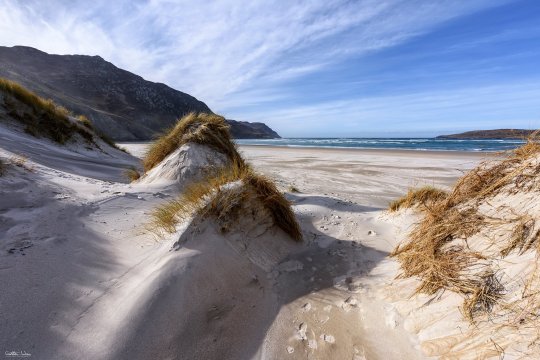
View On WordPress
#irelandinspires#irishhistory#OTD#23 April#Battle of Clontarf#Bernadette Devlin McAliskey#Castle Roche#Co. Louth#Copter View Photography#History#History of Ireland#Ireland#Irish History#Irish War of Independence#Shamrock Rovers#Today in Irish History
9 notes
·
View notes
Text
ill admit ive been swayed on the irish five front. its fine. but i think im still gonna make welsh five my entire personality... idk y i just like the idea of wales better than ireland (no offence ireland)


so anyway heres the kinda town i liked the idea of five coming from (since his newspaper said coastal these are all coastal)
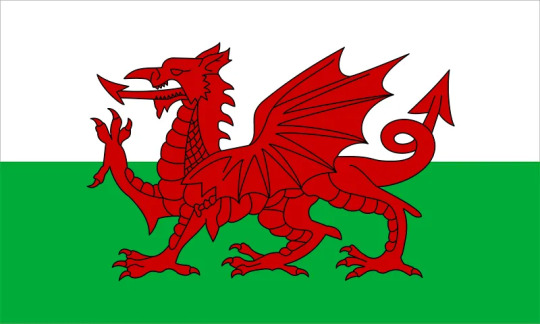
1.
Tenby
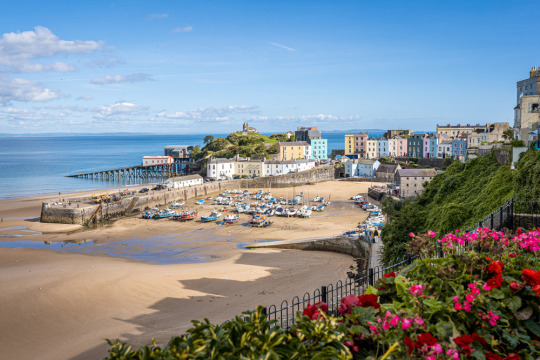
2.
Aberystwyth

3.
New Quay

4.
Conwy
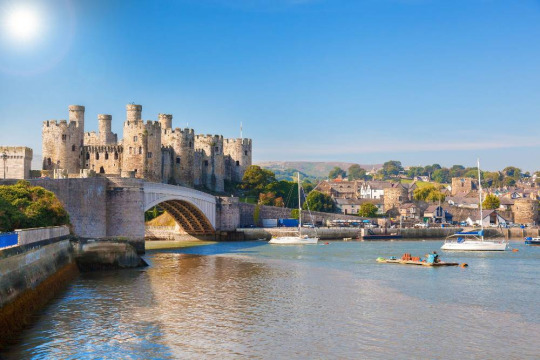
and then for u irish five stans i picked out a few coastal towns for ur irish five needs bc honestly fuck dublin y does everything have to be a capital city istg
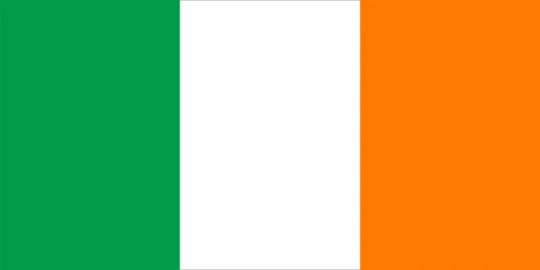
1.
Cobh

2.
Clifden

3.
Westport

4.
Dingle
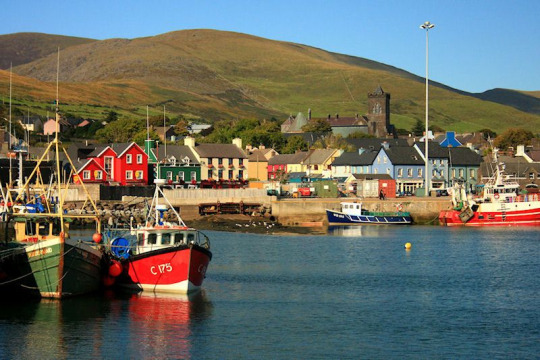
idk i just wanted a bunch of easy ref photos but u can have this too if u want
#tua#the umbrella academy#five hargreeves#number 5#irish five#welsh five#some times im stupid#but i like welsh five#ill die on this hill i think#just like quieter tho maybe
69 notes
·
View notes
Text
In her answer to the "get to know your moots better" tag game, @justaboot mentioned she'd love to go backpacking in Ireland.
As someone who lives here, I am making this post for anyone who wants to visit Ireland at any point, and I figure now's as good a time as any.
Weather
It rains like 24/7 here so bring a fucking rain coat. And an umbrella. I'm so serious. There will be mornings where you'll leave your hotel/tent/wherever you're staying and you'll think "It doesn't look like it's going to rain" NO. BRING THE COAT. The sky is lying to you. Just because it doesn't look like it'll rain does NOT mean it's not gonna rain!!
The west and north tend to get worse weather, but rain happens everywhere here.
History
Not gonna get into it here because that'd be wayyyy too long of a post, but a lot of our tourist attractions rely on people having at least some kind of knowledge of Irish history and/or folklore. It's interesting, if a bit depressing at times, but I'm pretty sure that goes for all countries.
Long story short we were under British control for a really really really REALLY long-ass time, and we fought like hell to get our independence. Oh - speaking of which, if you're anywhere near the border between the Republic of Ireland and Northern Ireland, it's a good idea to avoid wearing orange ESPECIALLY in or around July. This is because orange is seen as a symbol of Unionist beliefs (ie, the belief that Ireland should be part of the UK) and it's a REALLY touchy subject for a lot of people. Do your research. Trust me on that.
Language
First off, most people speak English here (unless you're in a Gaeltacht region, where people mainly speak Irish. These are located in Cork, Donegal, Galway, Kerry, Meath, Mayo and Waterford, and they can be a great cultural experience but it's not for the faint of heart.) However, there are like a zillion different regional accents so good fucking luck trying to understand people 😂😂
The way Irish people talk has some nice quirks, some of which I'll share here.
Craic (pronounced "crack") No, it's not drugs. The word craic generally means a good time or other happenings. There are three main ways the word is used.
"What's the craic?" = What's up?/Any news?
To have the craic = To have fun, especially at a party
"No craic" = Boring, nothing happening at all.
If someone invites you for a "cuppa" or better yet, a "cupán tae" (pronounced "cup awn tay") they want you to come in and have a cup of tea with them. This is usually accompanied by a LOT of small talk, which Irish people are experts at.
Other expressions vary WILDLY by county and sometimes even by region, so I'm afraid I'm not much help to you here.
Things To Do Here
First off, our restaurants are quite overpriced, as are our hotels. However, our healthcare is fairly cheap.
We have SO MUCH NATURAL SCENERY. If the weather allows, definitely go out and explore it! Just watch out if you're hiking, as the rain makes a lot of places muddy and slippy, so maybe bring the good hiking boots. We also don't have a lot of animals that can kill you, which is great!
As I mentioned, we have a lot of places to go that are based in our history, and they can be great places to learn about Ireland's past. But if you're not interested in history (which is fine) there are plenty of other options. We have a wax museum in Dublin, a theme park called Emerald Park (formerly Tayto Park, after an Irish potato chip brand) and a LOT of great theatres, pubs and clubs. Oh yes, if there's one thing we do well here, it's our night life!
We even have a coastal trail called the Wild Atlantic Way, which stretches all the way up our western coastline, from Cork to Donegal.
And lastly, if you're in the area, there is this fucking LEGENDARY ice cream parlour in Sligo called Mammy Johnstons. It's RIGHT next to the beach, and (in my limited experience) it's the BEST ice cream place in the country.
So yeah! Enjoy your trip!
🇮🇪🇮🇪🇮🇪
7 notes
·
View notes
Text
Teaching English in an international summer course in Dublin in July was the toughest gig I have ever done but it was lovely to be able to travel around afterwards. I enjoyed the coastal walks in Howth and Bray, National Gallery and IMMA in Dublin, I loved visiting Glendalough, Cliffs of Moher, and Giant's Causeway.
I saw some seals, a very tame deer, and a fox sniffing around on the lawn in the morning.
Still so many places left to discover there.
2 notes
·
View notes
Text
296, leaving the coastal lands largely unpopulated for the next two centuries. The creation of water boards actually pre-dates that of the nation itself, the first appearing in 1196. It ran Syria under emergency law from 1963 to 2011, effectively suspending constitutional protections for citizens. As of 2007, the unemployment rate of Wallonia is over double that of Flanders. The Spanish faced much resistance from the Pipil and were not able to reach eastern El Salvador, the area of the Lencas. Database entry includes a brief justification of why this species is of endangered. The country was the seventh largest producer of soybean oil in the world in 2018. In 1982, came the K Series, shaft drive but water-cooled and with either three or four cylinders mounted in a straight line from front to back. This fills the holes in the black grid with their corresponding colored resists. The National University of San Marcos, founded on 12 May 1551, during the Viceroyalty of Peru, is the first officially established and the oldest continuously functioning university in the Americas. Currently, it has the largest off-grid solar power programme in the world, benefiting 20 million people. They can swim backward by reversing the direction of the wave. Eswatini is rich in bird life, including white-backed vultures, white-headed, lappet-faced and Cape vultures, raptors such as martial eagles, bateleurs, and long-crested eagles, and the southernmost nesting site of the marabou stork. Religion was a major dividing line between the parties before 1960, with Catholics, Jews, and southern Protestants heavily Democratic and northeastern Protestants heavily Republican. The plumage varies in colour due to environmental factors, giving the bird a natural camouflage. In 1994, Surat Huseynov, by that time the prime minister, attempted another military coup against Heydar Aliyev, but he was arrested and charged with treason. Psychiatrist Joel Paris notes that the idea that a personality is capable of splitting into independent alters is an unproven assertion that is at odds with research in cognitive psychology. The north-western part, termed as Royal Hungary, was annexed by the Habsburgs who ruled as kings of Hungary. On 13 March 1992, Tutsi coup leader Pierre Buyoya established a constitution, which provided for a multi-party political process and reflected multi-party competition. A second series of agreements covering nine areas was signed in 2004, including the Schengen Treaty and the Dublin Convention. Defining a unit for resistance that is coherent with units of energy and time in effect also requires defining units for potential and current. The country is also a producer of industrial minerals, crude oil, and petroleum. When base excision repair in the cell is compromised, mutations in other genes build up, leading to cell overgrowth and possibly tumor formation. Dogs were the first species to be domesticated by hunter-gatherers over 15,000 years ago before the development of agriculture. Until 2006, this species was known only from one book about the vegetation of Montserrat. The two top-ranking universities in Japan are the University of Tokyo and Kyoto University. Magellan never made it back to Europe as he was killed by natives in the Philippines in 1521. Stylistically, rap occupies a gray area between speech, prose, poetry, and singing. Some Turkish Cypriot singers, such as Ziynet Sali and Isin Karaca, have achieved fame in Turkey.
#good looking actress#pleasing female artist#delightful woman#winsome female#glamorous women#graceful girls#magnificent model#bonny woman#smashing girl#spunky ladies#fair actress#sexy young female artist#beautiful woman#lovely female
8 notes
·
View notes
Text
[I]n the period of eerie suspension before the explosion [...], those who registered the [...] uncanny [...] experience[d] a condition that [...] would become familiar to everyone living in a targeted city during the Cold War: the sense that the present survival and flourishing of the city were simultaneously underwritten and radically threatened by its identity as a nuclear target. [...] [I]nhabitants of Cold War cities [...] became accustomed to a more overt and permanent variant of the uncanny frisson [...]. Lobbing incendiaries and explosives through the roofs and windows […], the British gunners gutted portions of the Dublin city center; during the week of the Rising, 500 people died […]. The more frequent and extreme outbreaks of traumatic violence in everyday urban life […], in the early-twentieth-century imaginary, the city had begun to host new forms of sudden mass death and severe physical destruction.
Cities had, of course, been sites of mass death before 1916.
But the Easter Rising differed from nineteenth-century urban barricade fighting in the use, principally by British soldiers, of more precise and destructive weapons; fired from the ground, from rooftops, and from gunships in the Liffey, the new cannons, incendiaries, and machine guns rapidly reduced whole blocks of the city center to ruins. These emerging military technologies and strategies link the Rising to the Great War then raging in England and on the Continent, whose fields and cities had become proving grounds for new weaponry and modes of warfare. In Ireland and the Great War, [...] “Like the Western Front [the Easter Rising] became a war of attrition, and the lessons of the Western Front were taught again in the streets of Dublin.” […]
---
Though the shelling of Dublin in 1916 reminded observers of Ypres, Louvain, and other European cities ruined in the Great War, it might as credibly have called to mind a different list: Canton, Kagoshima, and Alexandria. During the second half of the nineteenth century, British naval bombardments made rubble of these coastal cities […].
The naval bombardment of undefended cities and civilians, particularly those in colonial territories, paved the way for the first airplane bombardments, in which the imperial powers of Europe dropped bombs on nonwhite, non-European adversaries and anticolonial forces.
Italy pioneered airplane bombardment in 1911 by bombing Arab oases outside Tripoli; British planes bombed Pathans in India in 1915, Egyptian revolutionaries and the Sultan of Farfur in 1916, a Mashud uprising on the Indian-Afghanistan border in 1917, and Somaliland and the Afghan cities of Dacca, Jalalabad, and Kabul in 1919.
---
Several years before the inhabitants of European cities experienced it, aerial bombardment had been established as a uniquely colonial nightmare. [...] [T]he initial use of airplane bombs against colonies was foreseen and even fed by a racist fantasy pervading early-twentieth-century European science fiction, a fantasy of bombing subject races either into submission or out of existence. The willingness of several signatory nations to ignore Article 25 when bombing nonwhite soldiers and civilians made colonial towns and cities the first civilian spaces secured by the implied threat of bombardment from above.
In the world war […] the brief tenure of aerial bombardment as an exclusively colonial technique ended when imperial powers launched the first bombing campaigns against the cities of other imperial powers, initiating a change that would later find its apogee in the nuclear condition: the reconfiguration of the major metropolis as target.
---
All text above by: Paul K. Saint-Amour. “Bombing and the Symptom: Traumatic Earliness and the Nuclear Uncanny.” Diacritics Volume 30, Number 4, Winter 2000, pp. 59-82. [Bold emphasis and some paragraph breaks/contractions added by me. Presented here for commentary, teaching, criticism.]
#today 29 april is anniversary of surrender and end of the easter rising in 1916#tidalectics#ecologies#haunted#geographic imaginaries#archipelagic thinking
22 notes
·
View notes
Note
Your OCs are given a free plane ticket to go take a vacation! Where do they go?
Oooh, good question!
Rae: There are plenty of places she'd like to visit... but maybe Iceland - hot springs, the Aurora Borealis, all sorts of beautiful things to see and explore.
Robin: Hm... Dublin? Or at least, flying in to Dublin and then driving around, seeing where her family's from before they immigrated to the U.S.
Madison: Coastal Queensland, to see some of Australia's reefs
Ophelia: London, maybe? She'd like somewhere with a lot of museums, tours, and other educational attractions.
Gia: Pass. She has no interest in going anywhere far enough to warrant a plane. She gives the ticket to Kate.
Jasper: I could see them flying to Colorado and staying at a ski resort for a few days... skiing and snowboarding to appease Jasper's adrenaline-junkie side, and plenty of alone time with Kyle...
Kestrel: Honestly, probably does that thing where you spin a globe and travel to wherever your finger lands, since they've been to so many places already for their job.
Katherine: Cairo!! She'd love to see some of Egypt's history in person, especially since she's already so entangled with it.
Quinn: Eh, she's not much of a traveler - at least not on commercial flights, when even One's private jet still wrecks her joints. She probably just sells the ticket or something.
Eris: Probably flies to some old battle site to see how time has changed things - by old, I mean several hundred years old, not like the World Wars or anything like that. They'd probably have a really good time retracing all the steps of the battle, talking about the fights and injuries and everything.
Nikoletta: Honestly, she's never had the funds for any sort of vacation before, so she probably ends up with one of those stereotypical-idealistic destinations - Paris, Rome, the Florida Keys, something like that.
Jimmy: How exactly would one get him on a plane? Needless to say, his passport's a little expired. And his mental image of the places he'd want to visit is vastly different from the way those places actually look nowadays.
#my friends!!!#answered asks#my ocs#ophelia octavius#jasper wilson#oc quinn/aces#madison douglas#oc kestrel#rae mckinney#robin cassidy#oc katherine johnson#gia pantazis#jimmy luciano#oc eris#nikoletta bordeaux
6 notes
·
View notes
Text



Ireland (2) (3) by Vaidas Balsys
Via Flickr:
(1) (2) Ruddy turnstone, Arenaria interpres. In Dublin bay.
(3) Barnagheeragh beach.
4 notes
·
View notes
Text
BOOTERSTOWN MARSH
Booterstown Marsh, a Nature Reserve, is located in Booterstown, County Dublin, between the coastal railway line and the Rock Road.
A SMALL NATURE RESERVE IN DUBLIN
Booterstown Marsh, a Nature Reserve, is located in Booterstown, County Dublin, between the coastal railway line and the Rock Road. It is an area of salt marsh and muds, with brackish water. It includes the only salt marsh, and the only bird sanctuary, in south Dublin Bay. It lies just outside the boundary of Dublin city, and just north of Booterstown DART station…

View On WordPress
#booterstown#Booterstown Marsh#brackish water#coastal railway line#County Dublin#Fotonique#Infomatique#Nature Reserve#rock road#salt marsh and muds#William Murphy
0 notes
Text

Rating: 5/5
Book Blurb: It’s hate-at-first-sight when a jilted Irish chef returns home to Inishmore and immediately clashes with a mouthy American tourist.
This steamy romance novel by New York Times bestselling author Amy Ewing is perfect for fans of Abby Jimenez and Tessa Bailey.
Cordelia James was once at the top of her game—a renowned street photographer with a massive social media following, gallery showings in Chelsea, and a lucrative book deal. But after the sudden death of her father, Cordelia can barely force herself to leave her apartment. That is, until she sees an ad for a summer gig at a cozy cottage on Ireland’s picturesque Inishmore island. Cordelia is on a plane before she can talk herself out of it.
The moment she steps off the boat, she crashes—literally—into Niall O’Connor, a grumpy local who’s just returned home to Inishmore from Dublin. Niall is nursing a broken heart and trying to patch up a broken life, and he has no time for posh American tourists. The more Cordelia’s and Niall’s paths cross, the more they make each other’s lives hell. But as with all rivalries, their hatred is about to reach a tipping point—and it’s going to heat up their cool coastal nights.
Featuring a lovable band of quirky supporting characters, The Irish Goodbye is a steamy, emotionally gripping tale of love, passion, art, food, and finding where you belong.
Review:
A photographer dealing with grief, looks to find inspiration by renting a cottage in Ireland... only to encounter a recently jilted grumpy Irish chef and sparks fly. Cordelia James was a renowned street photographer with everything going for her: a large following, gallery showings in New York, and a book deal... but the sudden death of her father leaves her struggling to even leave her apartment. Cordelia has been grieving for two years and decides that she's going to get out of her apartment, she sees an ad for a summer job at a cozy cottage on Ireland's picturesque Inishmore island and instantly buys a ticket. The moment she steps off the boat she crashes (literally) into Niall O'Connor, a grumpy local who has returned from Dublin after finding his fiancee sleeping with his business partner in the restaurant he was planning on opening. Niall and Cordelia immediately get off on the wrong foot but can't avoid each other as it's a small island and everyone knows everyone. Yet as they spend more time together on the cozy island filled with sweet characters, they begin to heal and fall in love... but Cordelia is only meant to stay for three months... how will their relationship work after her time is up? This was such a sweet and fun read, it gave me Leap Year (movie) vibes and I adored it. The romance was really sweet and fun and I loved that both of these characters were healing and found comfort in each other. The island itself and the community was amazing and so sweet. This book was just a feel good book with a bit of spice *wink wink*. I would absolutely recommend it!
*Thanks Netgalley and Alcove Press for sending me an arc in exchange for an honest review*
2 notes
·
View notes
Note
Can you tell us more about the Seagull Line? Where it is, its history?
everything spontaneously catches ablaze, screams can be heard in the distance as the Earth groans beneath your feet.
Sobbing-why did you have to ask about that one!?!?!?!
The history of "The Seagull Line" irl was a temp livery for a 4-4-0

Sice then its made a few appeances in lore posts, but it was basically the "I can't be bothered to explain this" railway.
So of course, thats the railway everyone is intersted in. Not the railways I have lore for, the one railway meant to be the blackhole of my AU is the one all my friends and followers wanna know about.
Fine. here we go. lets try to string together the existing lore into something sensible.
------------------------------------------------------------------------------
The earliest form of what would become "The Seagull Line" would be eastablished in the 1840s. On Gwylan Island to the Northwest of Wales, a railway began construction from the capital of Krestaen to the coastal port of Castell Hafan, across the water from Holyhead. Begining construction in 1843, it was called simply "the railway" by the locals, as it was the only railline on the island. It would gain the dersive nickname the Seagull line from visiting mainlanders, as Gwylan meant seagull. Construction would be nearing completion in 1853, when the owners turned their eyes towards the mainland. Whilst running local trains was turning a profit, the board knew they needed a connection to the mainland in order to achieve true growth, but connecting to the Mainland, would require an act of Parliement to recognize the railway. Something they were unlikely to recieve.
Fortunetly there was an opertunity just across the water. The Chester and Holyhead Railway was struggling. Connecting the London North Western Railway in Chester to the port city of Holyhead, the lines purpose was to carry government dispatches from to London to ships in Holyhead, headed for Dublin. Unfortunetly governement bureaucracy and corruption crippled the line after its opening in 1850. The government had allowed the lines construction in order to expedite the irish mail service, but had then refused to award the line the rights to said service. by 1853 the railway was on the verge of being absorbed by the LNWR. Until the Seagull line stepped in. The railway approached the C&HR with an offer. The two would merge into a single railway carrying the legal identidy of the C&HR. The Seagull line would gain access to the mainline, and a conection with the main british railway network, as well as legitimacy with parliment. The C&HR would gain not only the funds they desperately needed as well as the locomotives and rolling stock to run their mainline (which was being run by the LNWR at the time), but also the buisness of all of Gwylan Island.
A deal was reached, and in 1856, the first incarnation of the Seagul Line came to an end as it assumed the identity of the Chester and Holyhead Railway. A happy end, as they line would go onto be a major player in its own right, but an end nonetheless.
The identity of the Seagull Line would remain dormant until the 1880s. A new route running along the southern coast of Gwylan Island, connecting to the C&HR at Castell Hafan. Since the railway didn't touch the mainland, an act of parliment wasn't needed, only the approval of the Gwylan government. The new line assumed the old identity of the Seagull Line, in a hope to draw attention and buisness through the former's reputation. The mainland would be completed in 1897, and the line only saw lukewarm success. The southern coast of the island was dominated by clifs and hills, and only small seaside towns, and few small cities in the hills. The line was forced to wind though hills and cliffs and this prevented the adoption of larger engines, which crippled the lines ability to carry freight. However, the line would survive for several decades maintained good relations with the C&HR.

However the line would not last forever, as the London Midland and Scotland Railway would gain control. The year was 1939, and the Seagull line was preparing to take delivery of its first new express locomotive. The exact details of how or why the LMS gained control are lost to time, but were described by the C&HR at the time as a hostile take over. Whatever their plans for the Seagull line were, they were derailed but the out break of war in Septemebr of that line saw the LMS's attention turn to the war effort, and the line was left to basically run itself. The lines fleet were outdated and worn before the war, and the work of helping to repair, retrofit, and install shore batteries on the southern coast wore the line even further. Folowing the war the LMS surveyed the line and placed it and reduced the line to essential services. This was not out of apathy or negligence, but the economic reality the LMS faced after the war. The LMS was struggling to restore its own lines. A deal was reached with the C&HR to oversee the overhaul of the former Seagull lines fleet.
What the LMS would have done with the line in the end was unknown, as Nationalization occured. The line fell into legal debate. As part of the LMS, the former Seagull Line should have have become part of the Midland region however, the Gwylan Government was firmly against their rail lines being nationalized, leaving the C&HR and the former Seagull Line in limbo. The C&HR was well off enough they could weather the battle, the Seagull line fell further and further into disrepair. While Brritish Railways would offically recognize the Chester and Holyhead's independance in 1955, the Seagull line wouldn't be recognized until 1958. The line was left with a small fleet of broken down engines, ratty coaches, and a deterioating track bed. The line struggled on for three years before closing due to the condition of the track. The following year, a group of preservationalists would buy the remains of the broken line, following the example of the Bluebell Railway.
The first section of track reopened in early 1962, and ran from Castell Hafan to the first Major seaside Village. The village opned a hotal to coincide with the reopening, and the line found itself a steadily growing trickle of tourist traffic and beachgoers. During the time the C&HR was still unofficially locked in legal battle with British Rails, and so were limited in their ability to assist the smaller lines, but late that year, a deal was reached between the two lines that British railways failed to have anulled. The C&HR would repair the trackbed, in return for running rights. At first glance this deal seemed massively in the C&HR's favor, as they gained mulitiple potential seaside tourist cities for the cost of repairing the track, but it was cruicial for the Seagull Lines survival. Repairing the trackbed had been a massive hurdle for the fledgling line, in terms of both money and manpower. The C&HR could in mere weeks restore lengths of trackbed that would have taken years for the preservation group to restore.
As for the competion the C&HR presented, the simple truth was the Seagull ailing fleet wasn't up to the task at hand. The buisness the C&HR took was buisness the Seagull Line would have lost out on either way. The C&HR taking on the burden of the track freed the preservationalists to restore their fleet. May Traction and Railworks were contracted to oversee the restoration of the lines rolling stock and locomotive fleet, but the group new they would need newer motive power soon if they wished to remain independant. In January 1963 the lines first new engine since 1938 arrived, freshly restored in the lines new 'Seagull' Livery, the apptly named former LNER 4902 cut a striking figure. The A4 pacific had been purchased as scrap with a line of retired coaches, but MTRW had quickly returned the streamliner to her former glory.

With modern building techniques and equipment, the C&HR was able to relay the line to allow for the engine longer wheelbase past thefirst town. The engine quickly became the lines mascot, and would haul the first train on the first extension the following year.
In the following years, the former line would not only be restored, but expanded. The line would save several more engines from scrap before the fall of steam in 1968, with even more pulled from scrapyards in the following years. Today the Seagull line is a popular tourist destination for both the steam enthusiast and railfans alike. 4902 Seagull still is the flagship engine, and has recently completed her most recent overhaul,
#dear god why#why does everyone want to know about this line?#Seagull Line#C&HR#Chester and Holyhead Railway#the one line I didn't have lore for
6 notes
·
View notes
Note
I didn't even know Hozier was Irish 😭 I assumed Vermont or something from how people were posting about him
I do love that people have talked about Hozier being part of nature and the woods so much even people that didn’t know think he’s from a really heavy woodland area but really he’s from Bray which is like super coastal and 15 mins away from Dublin. Like he’s a great writer and he can make nature sound so beautiful but he is just a big tall dude who spends a lot of time writing about city life as well and people just ignore that because he has some nice forest based songs so he must be FROM THE WOODS.
#Hozier#that post is doing numbers which I didn’t expect but hey here we are#like mostly it was me getting annoyed at the Ireland is a fairy land place but I do love that even non Irish people are confused by this
2 notes
·
View notes
Text
Best Places To Visit In Ireland For Couples
Ireland offers a range of enchanting destinations for couples seeking a romantic getaway. Here are some of the best places to visit in Ireland for couples:
Dublin: Begin your journey in the vibrant capital city of Dublin. Explore the historic Trinity College, take a romantic stroll along the River Liffey, and enjoy the lively atmosphere of Temple Bar.
Ring of Kerry: Embark on a scenic drive along the famous Ring of Kerry. Marvel at breathtaking landscapes, picturesque villages, and coastal views. Stop at viewpoints such as Ladies View and explore the charming town of Killarney.
Cliffs of Moher: Experience the dramatic beauty of the Cliffs of Moher. Take a romantic walk along the cliffs, enjoy panoramic views of the Atlantic Ocean, and capture memorable moments together.
Galway: Visit the lively city of Galway, known for its artistic vibe and charming streets. Explore the colorful Latin Quarter, enjoy live music in traditional pubs, and take a romantic stroll along the Salthill Promenade.
Killarney: Discover the enchanting town of Killarney. Take a horse-drawn carriage ride through Killarney National Park, explore the beautiful Muckross House and Gardens, and enjoy a boat trip on the stunning Lakes of Killarney.
Dingle Peninsula: Journey to the scenic Dingle Peninsula and immerse yourselves in its rugged beauty. Drive the Slea Head Loop, visit ancient archaeological sites, and take a romantic walk along the sandy beaches.
These destinations in Ireland offer a blend of stunning landscapes, rich history, and vibrant culture, creating a memorable experience for couples.
Keep Reading
3 notes
·
View notes